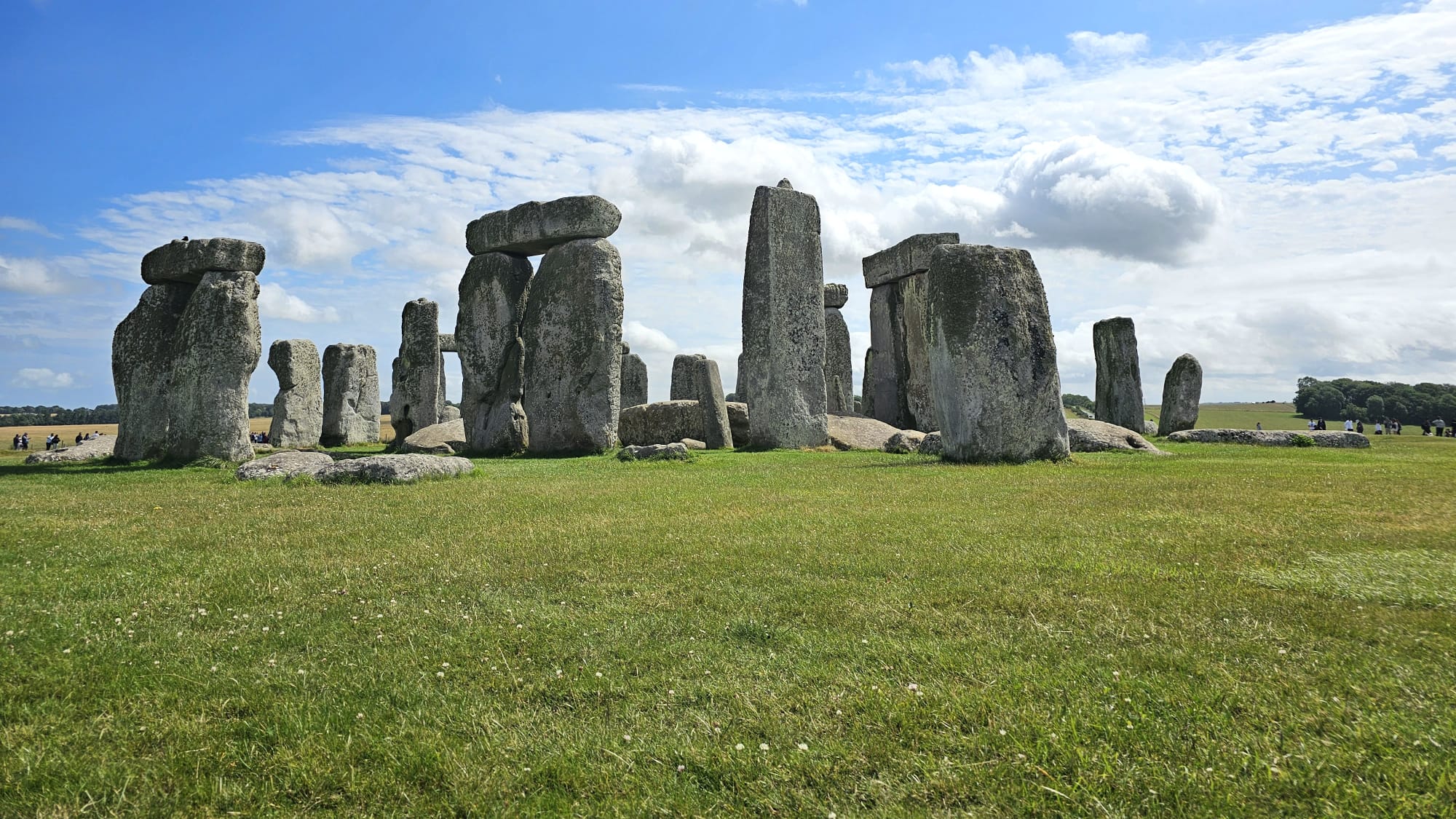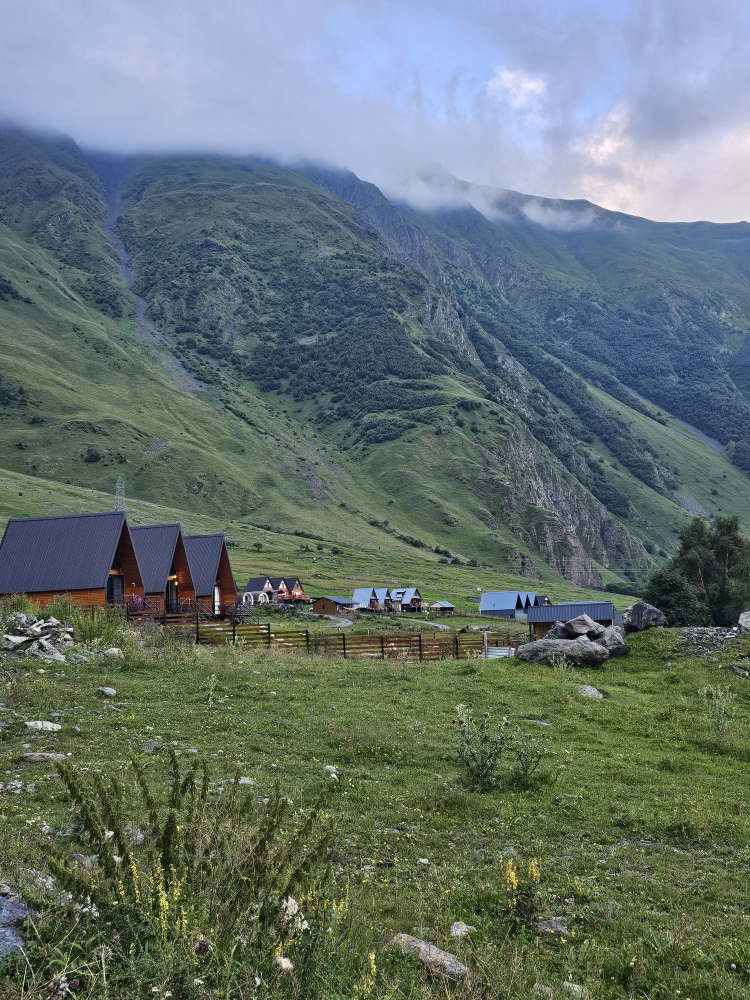When most people think of Tokyo, they picture futuristic skyscrapers, robot waiters, and the neon chaos of Kabukichō. But just beyond the city’s high-tech surface lies a slower, richer rhythm of life—one deeply connected to the land and its traditions.
In the countryside just south of Tokyo, seasonal activities like strawberry picking, shiohigari (clam-digging), and inekari (rice harvesting) are woven into everyday life. Today, I’m excited to share one of my favorite annual traditions: our rice harvest day.
🌾 What is Inekari?
Inekari (稲刈り) refers to the rice harvest, usually taking place from September to October when the golden stalks of rice have ripened under the autumn sun. Traditionally, farmers would cut each stalk by hand using a sickle (鎌), gather them into bundles, and hang them to dry under the sun before threshing.
Though more mechanized today, the spirit of inekari remains communal. Neighbors and volunteers gather in the fields, working side by side, sharing stories, and reconnecting with the land—and each other.
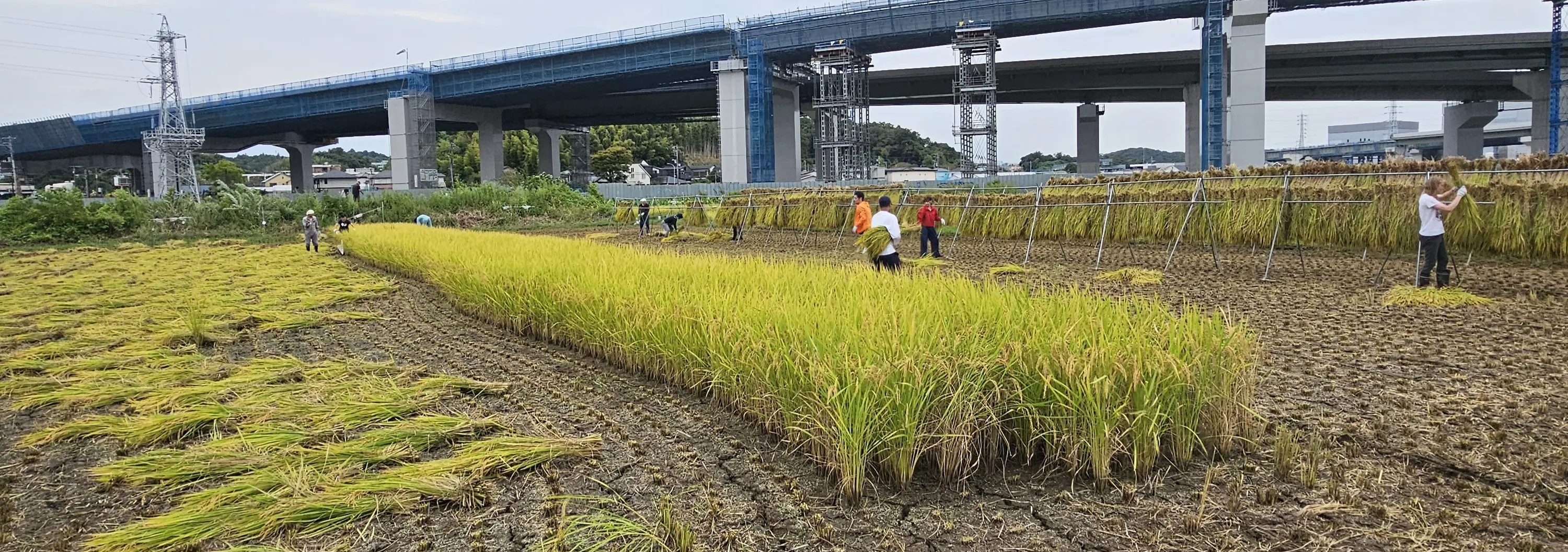
🌤️ Our Inekari Experience
We began our harvest early at 8:00 AM. Despite the season, the day was unexpectedly warm, though thankfully cloudy and dry, offering ideal conditions for fieldwork.
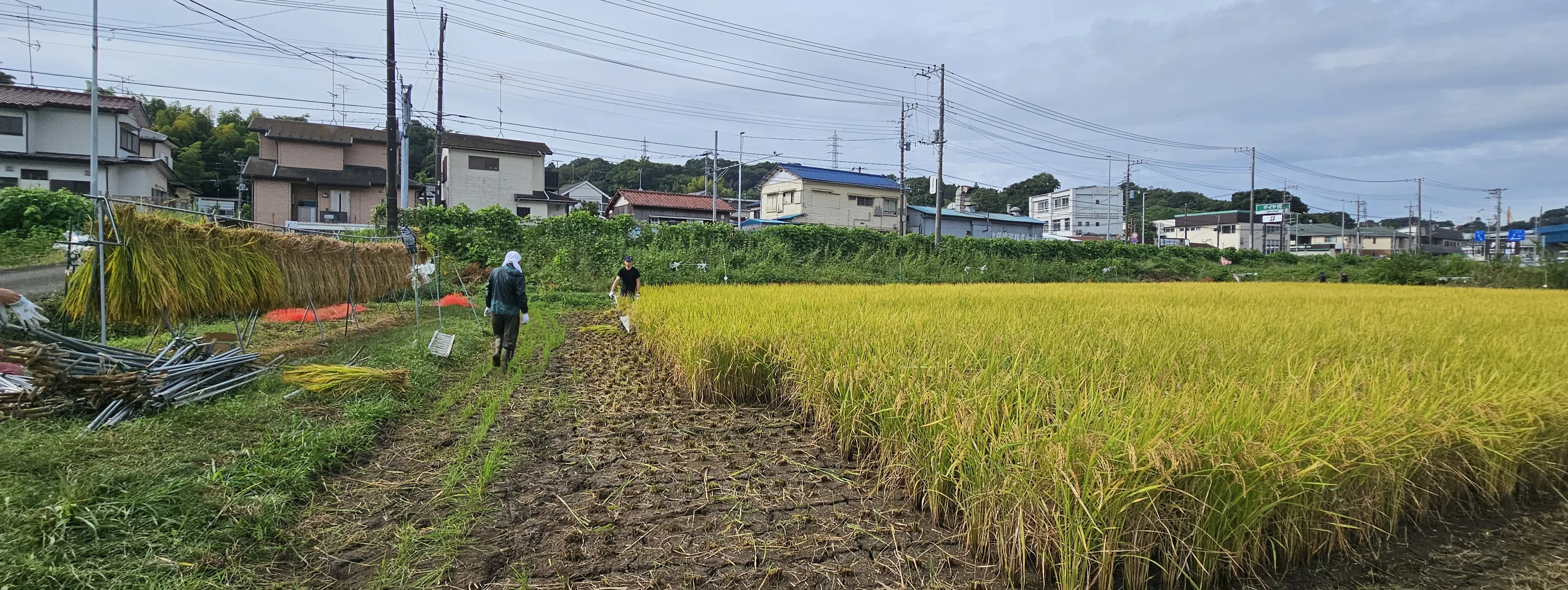

To get things moving faster, we made a small concession to modern convenience: instead of cutting everything by hand, we used a rice harvester. But first, we manually cut the rice along the edges and corners of the field to make space for the machine to operate safely.
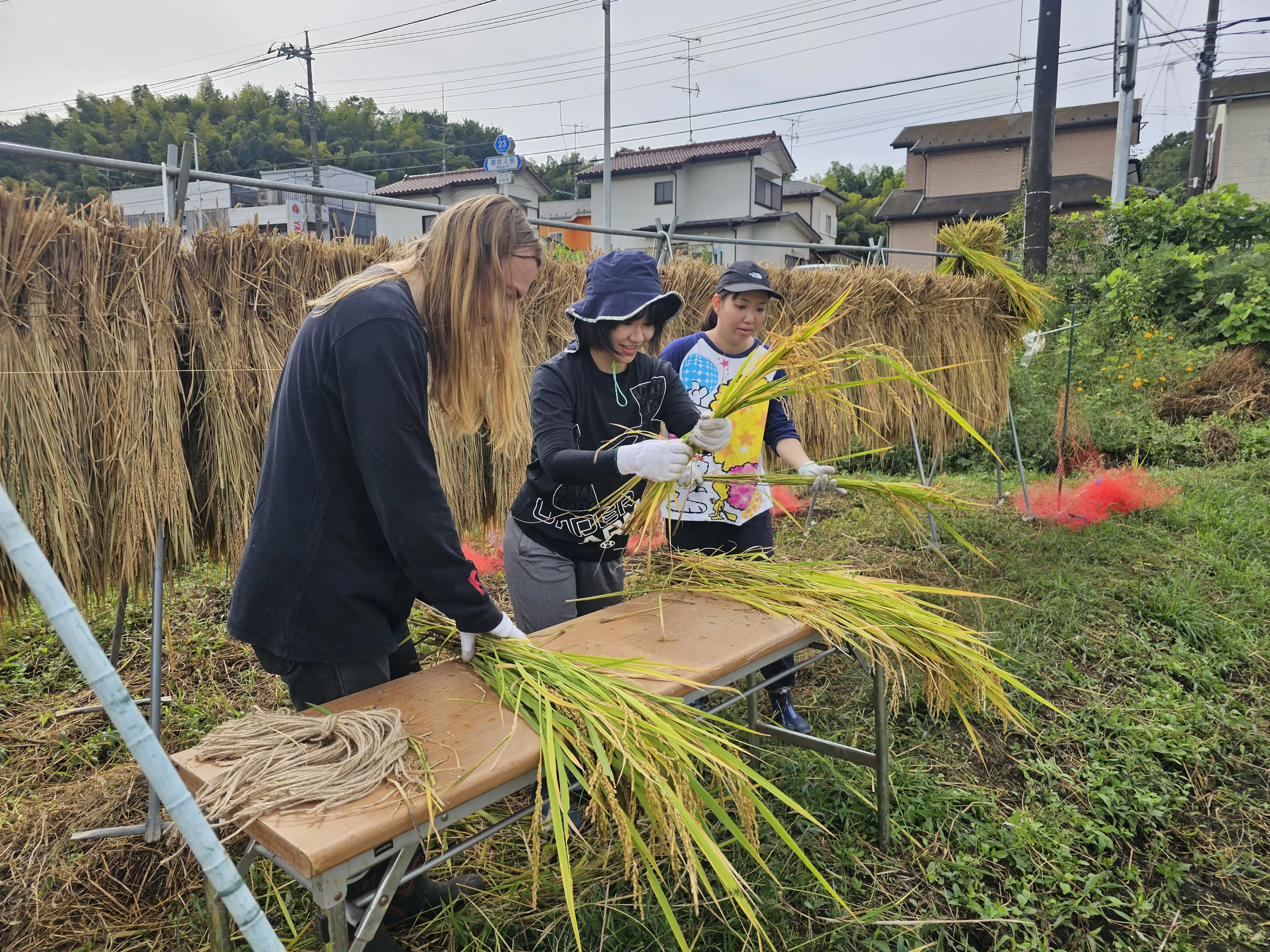

One of the most enjoyable parts of the day was forming a human chain to pass the rice bundles. It’s more efficient—and a lot more fun—than everyone walking back and forth alone.
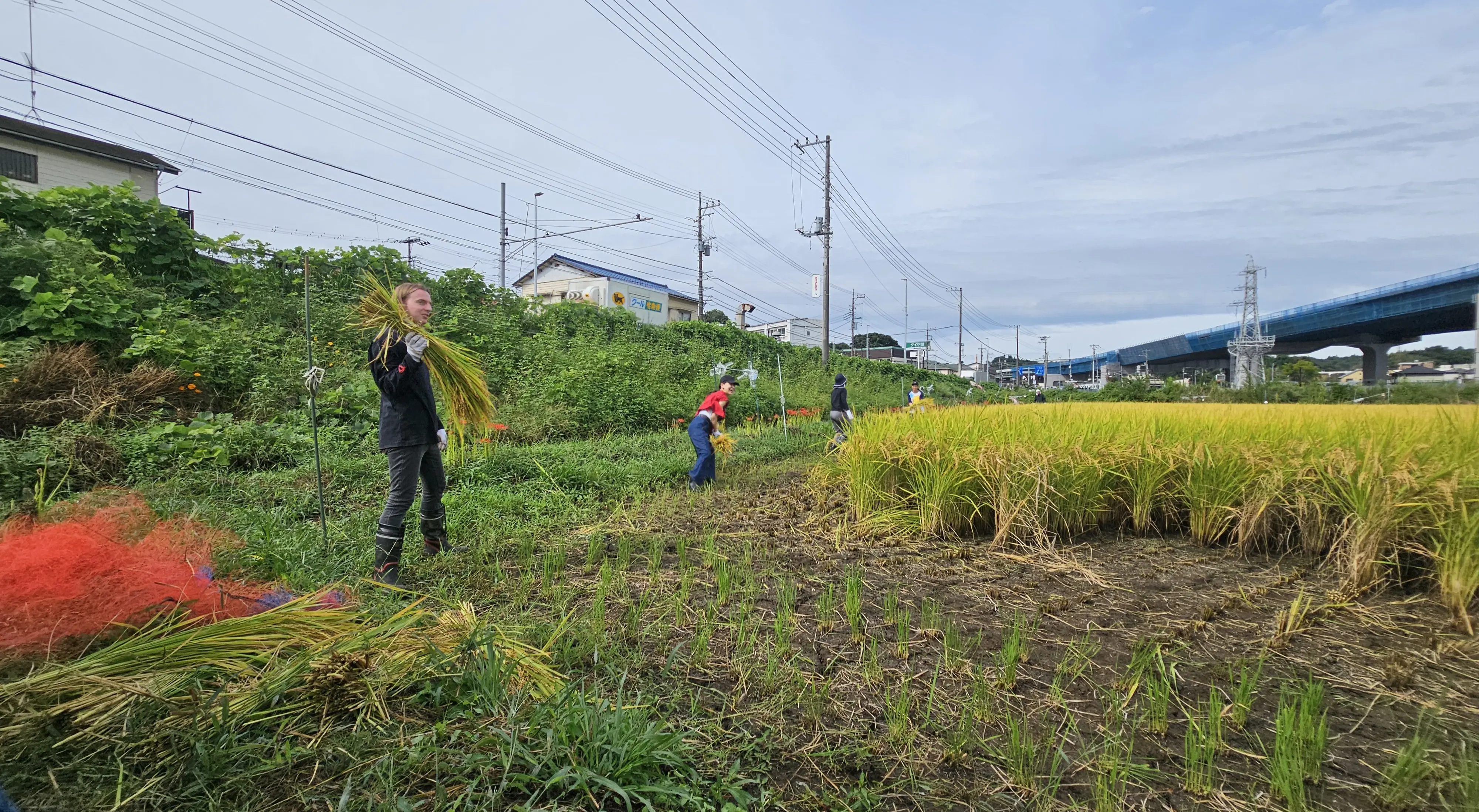
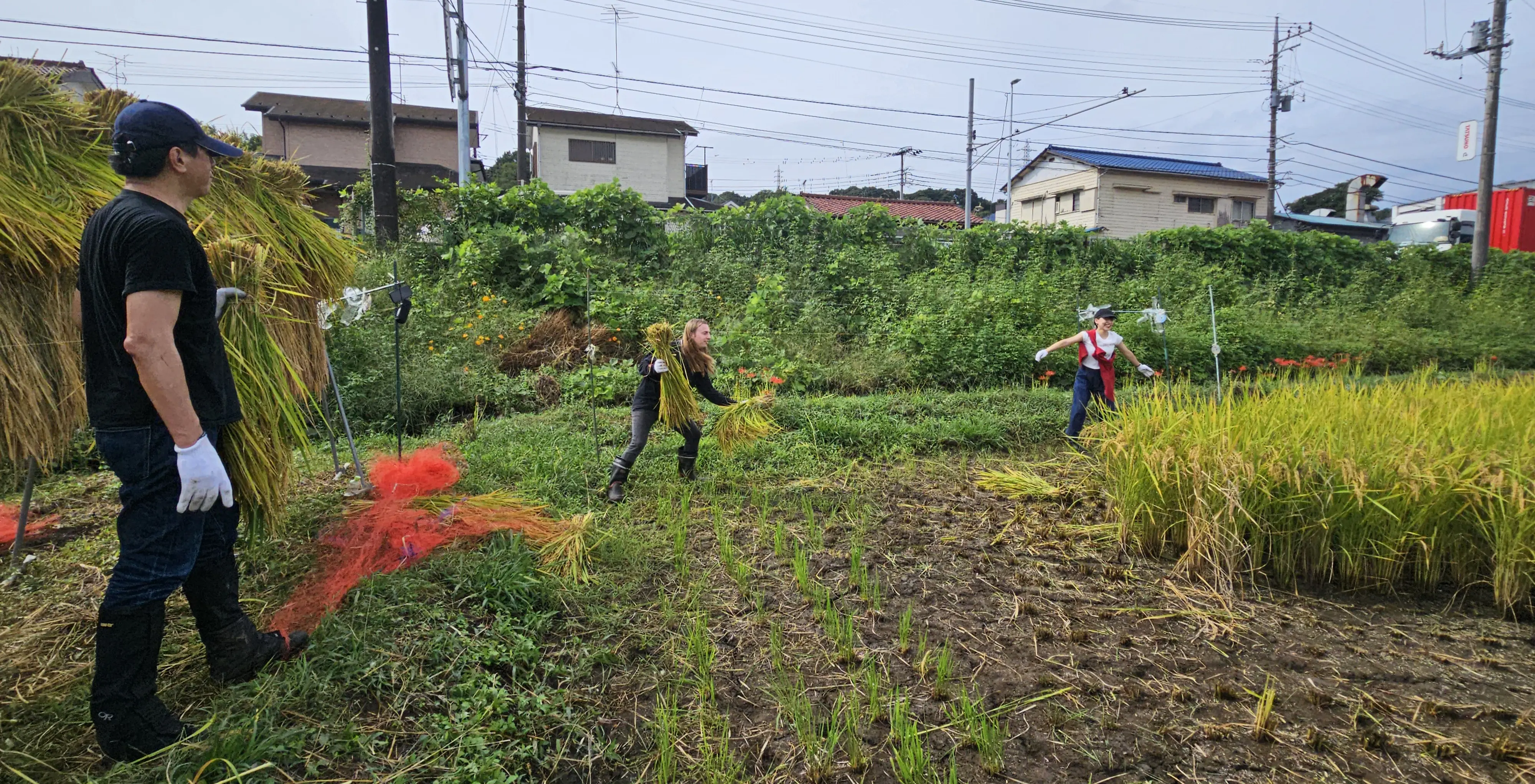
🌬️ Hasakake: Sun-Drying the Harvest
After harvesting, we built haza (稲架), traditional wooden racks used for hasakake (はさ掛け)—a time-honored method of sun-drying rice. This natural drying process enhances the flavor and quality of the rice, locking in its richness without the need for artificial methods.
Even after the visible work ends, farmers continue to monitor humidity and temperature to protect the rice’s delicate freshness. The care and attention to detail don’t stop when the rice is off the stalk.
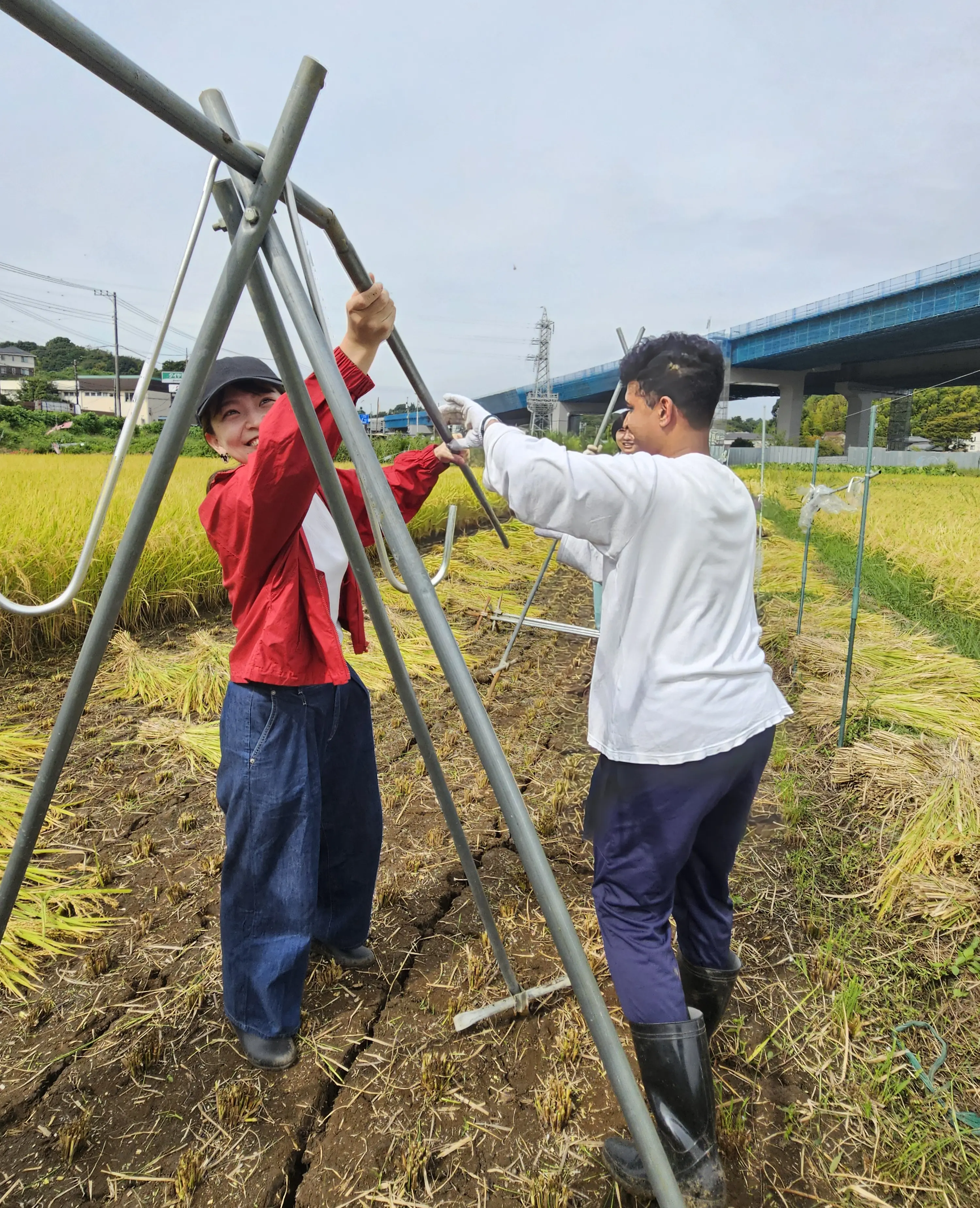
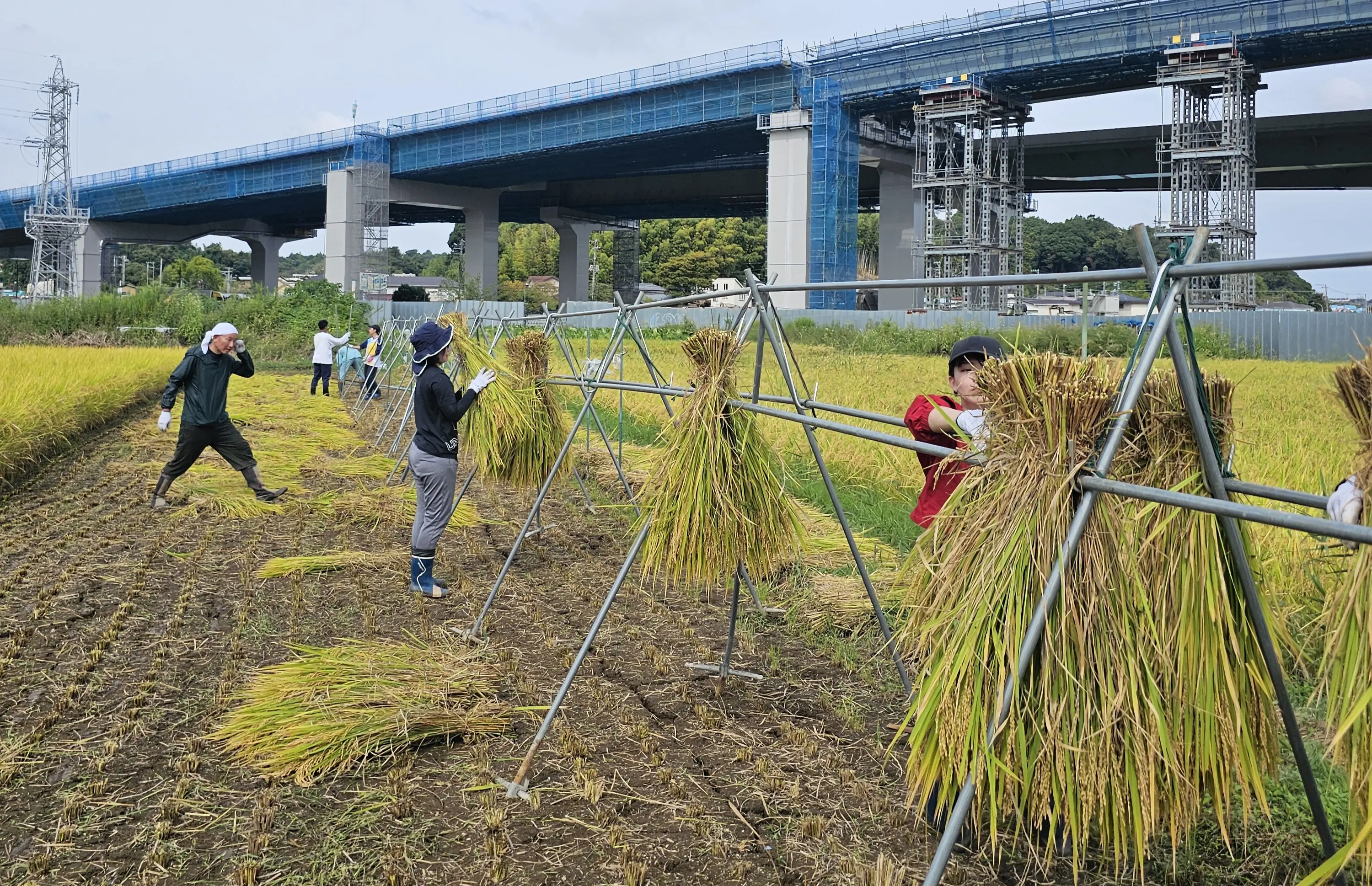
🎉 Finishing in a Day
Normally, it takes us two full days to cut and hang all the rice. But thanks to the many enthusiastic volunteers who joined this year, we managed to wrap up the entire harvest in just one day—a rare and satisfying accomplishment.
♨️ Onsen and Otsukare: The Perfect Ending
After hours in the fields, nothing feels better than a trip to the local onsen (hot spring) to soak tired muscles and reflect on the day. As always, we ended with a nijikai (二次会)—a second party, filled with laughter, food, and a well-deserved round of “otsukareee!” (Great job!).
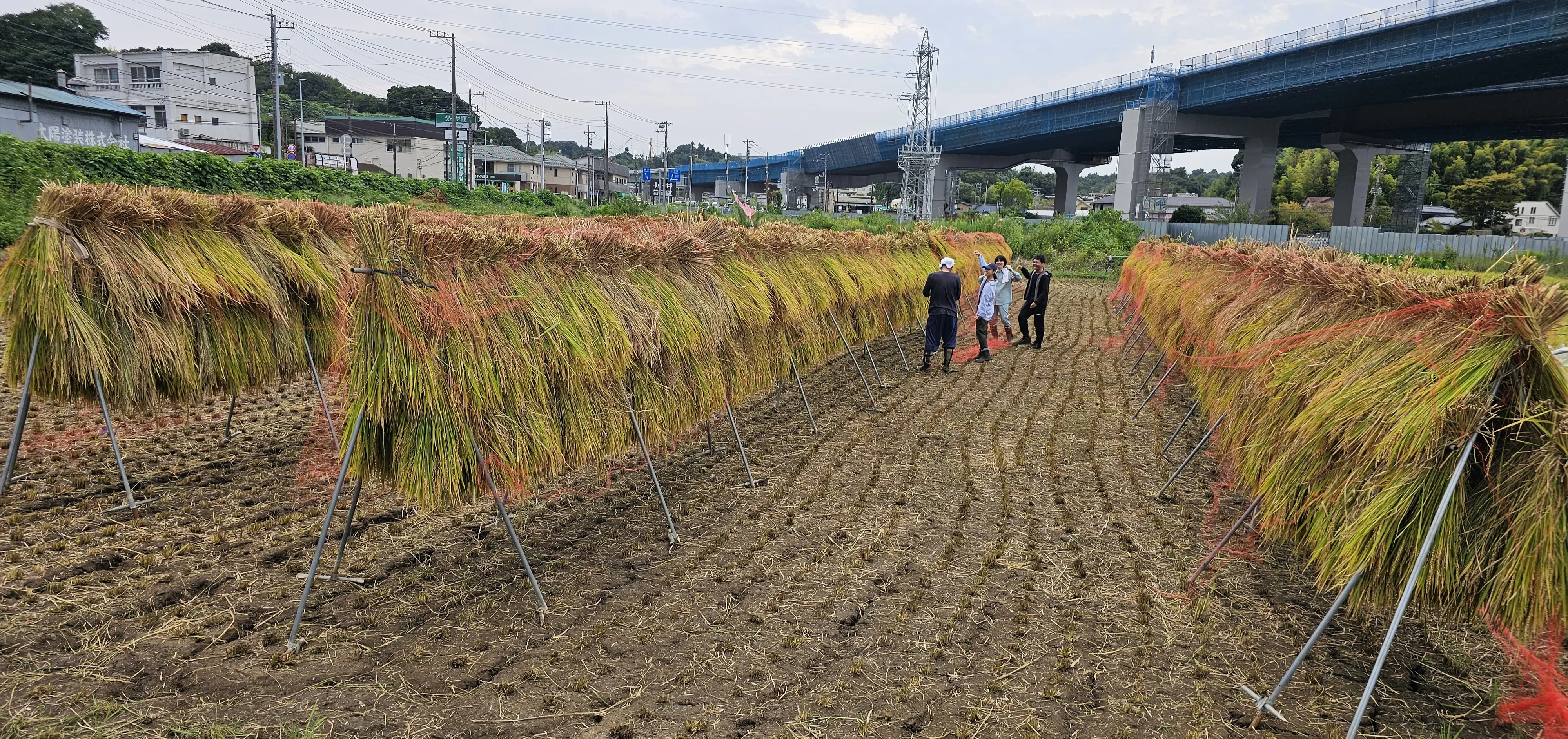
🛏️ Top Places to Stay in Tokyo
✅ Must-Do Activities in Tokyo
🌾 Why Inekari Matters
Inekari isn’t just about food—it’s about culture, community, and connection. In many regions, the harvested rice is sorted by quality, with certain areas producing premium-grade rice prized across Japan and even exported overseas.
But beyond the product, inekari helps preserve traditional farming knowledge, brings together multiple generations, and offers a powerful reminder of where our food comes from. It’s a living piece of cultural heritage—one you can still take part in today.
🧭 Final Thoughts: Explore Beyond the City
I hope this small glimpse into rural life near Tokyo inspires you to look beyond the city’s dazzling skyline. Whether you're harvesting rice, picking fruit, or simply walking through the countryside, Japan offers so many opportunities to connect with nature, people, and tradition—just a train ride away from the capital.
If you ever get the chance to join an inekari event, don't hesitate. You'll leave with more than just sore muscles—you'll carry home a new appreciation for Japan’s deep agricultural roots and warm community spirit.
Message us if you're interested in volunteering for next year's inekari.



